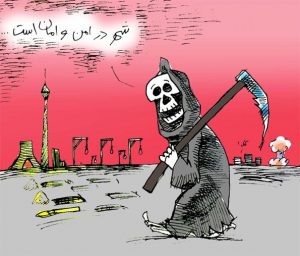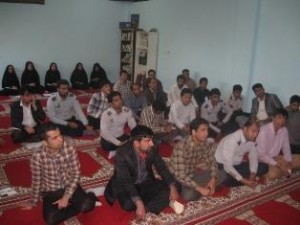Introduction
Torture has been one of the most enduring instruments of power throughout human history. From ancient times to modern states, torture has consistently been used to inflict suffering, consolidate power, and instill fear. However, over time, this tool has undergone conceptual transformations that have altered our understanding of it. The central question in this inquiry is whether torture has evolved into an instrument based on the identity of victims or whether it remains fundamentally rooted in states’ understanding of inflicting maximum suffering.
Theoretical Framework
1. Power, the Body, and Torture in Foucault’s Thought
Michel Foucault, in Discipline and Punish (1975), analyzes torture within the historical transformation of power. He argues that in premodern societies, power was exercised directly on the body. Public physical punishments such as flogging, mutilation, and execution were strategies of sovereignty that not only punished the criminal’s body but also conveyed a clear message of the ruler’s absolute power to society.
In modern times, these brutal public displays were transferred to institutions such as prisons. Power shifted from a focus on the body to disciplinary and surveillance-based control. Although torture disappeared from streets and squares, it persisted in the form of psychological interrogations, solitary confinement, and advanced techniques of psychological destruction.
2. Agamben’s ‘Homo Sacer’
Giorgio Agamben introduces the concept of ‘bare life’ in Homo Sacer, referring to a life stripped of legal protections and existing solely in a state of exception. According to Agamben, modern states legitimize torture by defining opponents as internal enemies. A ‘bare life’ or ‘bare body’ is one that, while under state control, is deprived of all rights it could possess, thus providing an opportunity to display new forms of power over identity and the body.
Individuals in this condition are subjected to torture not only to inflict pain but to transform them into a ‘homo sacer’— a person who can be killed but not sacrificed, existing in a zone of indistinction between law and lawlessness.
Torture in Different Cultures
1. Torture in Ancient Societies
In ancient societies such as Egypt, Rome, and Persia, torture was used as a tool for punishment and interrogation. In ancient Rome, torture was specifically applied to slaves and non-bourgeois criminals, reflecting a class-based distinction in its application.
In the Persian Empire, torture was mainly used for interrogating spies and political opponents. Methods such as mutilation and imprisonment in confined spaces illustrate rulers’ perception of torture as a means of eliminating political enemies and inflicting physical pain.
2. Torture in the Modern Era
In the modern era, torture has taken more complex forms. With the rise of nation-states and legal institutions, many countries officially declared torture illegal, but this did not mean its complete disappearance.
In 20th-century totalitarian regimes, torture was primarily ideologically driven. Under Stalinist Soviet rule, torture was used to extract confessions from dissidents. In Latin America, military dictatorships employed torture techniques to suppress leftist movements and political dissidents.
From Physical to Identity-Based Torture
One of the major shifts in torture practices has been the transition from physical torture to identity-based torture. Historically, torture was mainly inflicted to cause physical suffering, but in modern times, it increasingly targets the victim’s identity.
Identity-based torture is designed around the victim’s personal, racial, religious, or political characteristics. For example, in wartime detention centers, torture methods focusing on the victim’s religious identity (such as blaspheming their beliefs or forcing them to violate religious principles) have become more common.
Torture Techniques and the State’s Understanding of Suffering
States continue to use torture to inflict maximum suffering, but this suffering is no longer just physical. Techniques include:
1. Character destruction (depersonalizing prisoners, psychological torture)
2. Sexual torture (using rape as a tool of humiliation)
3. Cultural humiliation (insulting the victim’s language, religion, and national identity)
This shift indicates that torture is increasingly being used as a tool that not only targets the body but also the victim’s identity, moving towards personalization based on the victim’s identity. Furthermore, the more sophisticated and multifaceted a state’s torture methods become, the more they demonstrate its security and intelligence dominance.
The Future of Torture – Focus on the Victim or the State?
Ultimately, the question arises: Will
modern torture become more identity-based, or will it continue to be shaped by states’ understanding of suffering and the representation of their authority?
Historical and analytical reviews suggest that although torture was primarily used in the past as a tool for displaying governmental power and inflicting physical pain, in the modern era, it has evolved into a more sophisticated instrument targeting the victim’s identity.
Considering recent trends, especially in information wars and identity conflicts, future torture methods are likely to focus more on the psychological and social destruction of victims. However, this shift does not signify a decline in state power; rather, it demonstrates an evolution in the techniques states use to impose control.
This question remains open: Will torture gradually become a tool for identity-based targeting and personalization of suffering, or will it remain a means for asserting power, instilling fear, and representing state identity?
Conclusion
Torture, as an instrument of power, operates within the tension of two opposing tendencies: On one hand, states employ torture based on their understanding of suffering and dominant cultural and historical frameworks; on the other hand, in the modern era, with the rise of personalization, states have realized that more effective torture is designed around the individual identity and sensitivities of the victim.
This transformation reflects a deeper shift in the logic of domination: Modern states have not only become more flexible in exerting power, but they have also adapted their methods of repression to fit the demands of the era of personalization.
This apparent contradiction is, in reality, a reflection of the internal mechanisms of modern state power, which Foucault explains through the concept of ‘biopower.’ In this framework, power is no longer only imposed on obedient bodies but penetrates into individuals’ lives, internalizing control. Torture has thus shifted from a public punitive tool to a method for redefining the boundaries of individual identity.
The tortured individual is no longer merely a suffering body; they become an object subjected to different forms of repression based on their unique characteristics. In this context, the concept of homo sacer becomes relevant: a person stripped of legal protection, yet fully controlled by the state—someone who can be killed but not sacrificed. This concept applies to groups excluded from legal protection but systematically subjected to state violence. Personalized torture in modern societies is, in fact, a realization of this condition: the torture victim is placed in a state of exception, where the law is suspended for them, but torture itself is meticulously defined and applied based on their personal suffering.
Thus, modern states use torture not only for punishment but also to redefine and control social and political boundaries. By studying the psychological, cultural, and biological aspects of their victims, they design torture methods tailored to individual sensitivities. However, this process does not indicate liberation from power structures but rather their evolution.
While torture appears to be shifting towards individuality, it remains fundamentally governed by the logic of state dominance.
Therefore, what seems like a contradiction in the logic of torture is, in reality, a reflection of how modern states have adapted to the requirements of the times—requirements that themselves shape the discourse of modern governance.
Narrator
آدرس و اسامی صفحات مرتبط با فدراسیون عصر آنارشیسم
Federation of Anarchism Era Social Media Pages
۱- آدرس تماس با ما
asranarshism@protonmail.com
info@asranarshism.com
۲- عصر آنارشیسم در اینستاگرام
۳- عصر آنارشیسم در تلگرام
۴- عصر آنارشیسم در توئیتر
۵ – فیسبوک عصر آنارشیسم
۶ – فیسبوک بلوک سیاه ایران
۷ – فیسبوک آنارشیستهای همراه روژاوا و باکور - Anarchists in solidarity with the Rojava
۸ – فیسبوک دفاع از زندانیان و اعدامیان غیر سیاسی
۹ – فیسبوک کارگران آنارشیست ایران
۱۰- فیسبوک کتابخانه آنارشیستی
۱۱ – فیسبوک آنارشیستهای همراه بلوچستان
۱۲ – فیسبوک هنرمندان آنارشیست
۱۳ – فیسبوک دانشجویان آنارشیست
۱۴ – فیسبوک شاهین شهر پلیتیک
۱۵ – فیسبوک آنتی فاشیست
۱۶- تلگرام آنارشیستهای اصفهان و شاهین شهر
۱۷ – اینستاگرام آنارشیستهای اصفهان و شاهین شهر
۱۸- تلگرام آنارشیستهای شیراز
۱۹ – تلگرام ” جوانان آنارشیست ”
۲۰ - تلگرام آنارشیستهای تهران
۲۱ – اینستاگرام جوانان آنارشیست
۲۲ – گروه تلگرام اتحادیه آنارشیستهای افغانستان و ایران
۲۳ – توییتر اتحادیه آنارشیستهای افغانستان و ایران - The Anarchists Union of Afghanistan and Iran
۲۴ – فیسبوک اتحادیه آنارشیستهای افغانستان و ایران
۲۵ – اینستاگرام اتحادیه آنارشیستهای افغانستان و ایران
۲۶ – کانال تلگرام خودسازماندهی مطالب گروه اتحاديه آنارشیستهای افغانستان و ايران
۲۷ – گروه تلگرام خودساماندهی مطالب گروه اتحادیه آنارشیستهای افغانستان و ایران
۲۸– اینستاگرام آنارشیستهای بوکان - ئانارکیستە کانی بۆکان
۲۹- کانال تلگرام کتابخانه شورشی
۳۰- کانال تلگرام ریتم آنارشی
۳۱- تلگرام آنارشیستهای اراک
۳۲- تلگرام قیام مردمی
۳۳- ماستودون عصرآنارشیسم
۳۴- فیسبوک آنارشیستهای مزار شریف
۳۵- فیسبوک آنارشیستهای کابل









